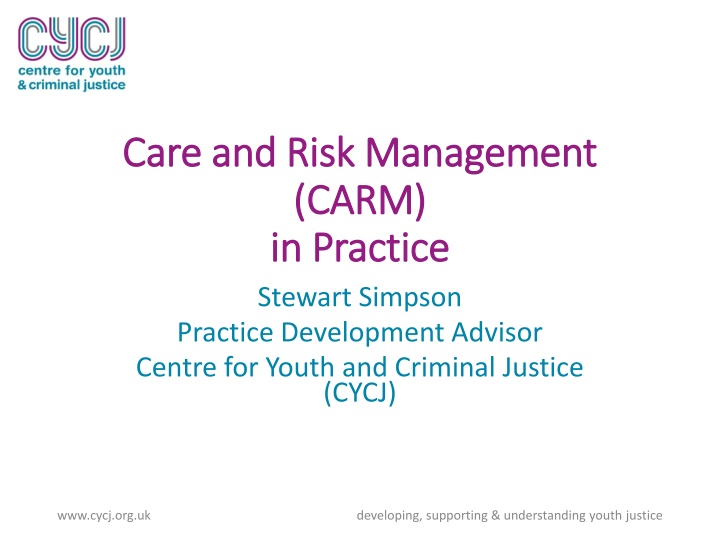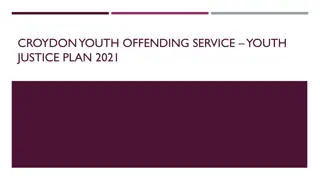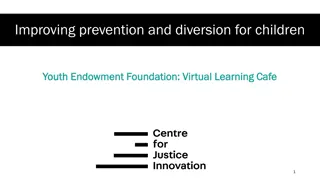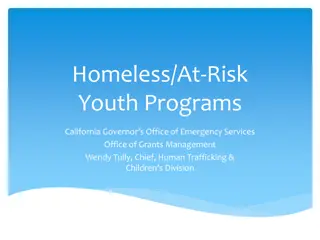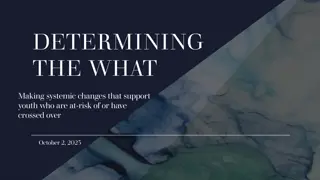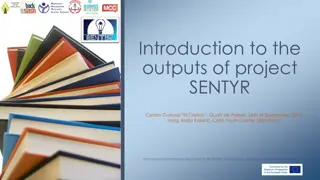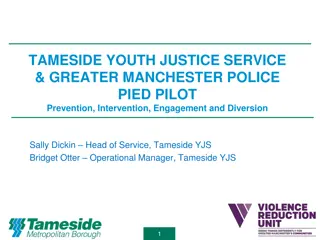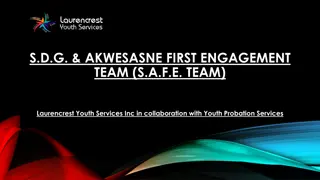Practical Guide to Care and Risk Management (CARM) in Youth Justice
Explore the practical application of Care and Risk Management (CARM) in youth justice, focusing on providing a national framework for assessing and managing young individuals aged 12-18 who pose a risk of harm to others. Learn about CARM meetings, referral processes, and the importance of multi-agency collaboration in developing effective risk management plans.
Download Presentation

Please find below an Image/Link to download the presentation.
The content on the website is provided AS IS for your information and personal use only. It may not be sold, licensed, or shared on other websites without obtaining consent from the author.If you encounter any issues during the download, it is possible that the publisher has removed the file from their server.
You are allowed to download the files provided on this website for personal or commercial use, subject to the condition that they are used lawfully. All files are the property of their respective owners.
The content on the website is provided AS IS for your information and personal use only. It may not be sold, licensed, or shared on other websites without obtaining consent from the author.
E N D
Presentation Transcript
Care and Risk Management Care and Risk Management (CARM) (CARM) in Practice in Practice Stewart Simpson Practice Development Advisor Centre for Youth and Criminal Justice (CYCJ) www.cycj.org.uk developing, supporting & understanding youth justice
1. The Purpose of CARM 1. The Purpose of CARM To provide a consistent national framework for the assessment, management and evaluation of young people aged 12-18 years ,who pose a serious risk of harm to others. Referrals to CARM will likely be young people involved in violent or harmful sexual behaviour, although referrals for other concerning behaviours may also be appropriate The CARM process should run parallel and compliment the GIRFEC process and Childs Plan. Risk Management meetings should be multi-agency and local processes should be signed off by local child protection committees. www.cycj.org.uk developing, supporting & understanding youth justice
2. What should a CARM meeting 2. What should a CARM meeting consider? consider? highlight to appropriate agencies those who present a risk of serious harm to others; ensure relevant risk assessments are undertaken; share information in a multi-agency forum about risk of harm; clarify the nature of the harm and to whom; undertake scenario planning; identify safety factors which can reduce risk; Ensure robust, but age and stage appropriate risk management plans are in place. www.cycj.org.uk developing, supporting & understanding youth justice
3. Referrals to CARM 3. Referrals to CARM Referrals should be made to a central point of contact who has knowledge of legislative and policy frameworks and experience of relevant processes, such as child protection processes. Referrals may be made by a range of partners of agencies including; Police, receipt of the concern, lead professional or others aware of the concern e.g. EEI co-ordinator. www.cycj.org.uk developing, supporting & understanding youth justice
Referrals to CARM ( Referrals to CARM (cont cont) ) Where a child is thought to meet the criteria a referral discussion should take place with 24 hours and no more than 72 hours after the incident. A referral discussion should include information that allows the person co-ordinating referrals to make a decision on whether a CARM meeting should be convened and a summary of immediate actions required to ensure the safety of others. www.cycj.org.uk developing, supporting & understanding youth justice
4.Taking Immediate Action 4.Taking Immediate Action Immediate actions agreed to protect others should be noted on an outcome recording form and recorded in the local case management system (Frameworki, Swift etc) Immediate actions could include; Review living or education arrangements, consider actions to protect the community or consider arrangements to address interest from the media. www.cycj.org.uk developing, supporting & understanding youth justice
5. Initial CARM meetings 5. Initial CARM meetings Initial meeting within 21 calendar days of referral and will likely include, Social Work, Police, Education, CAHMS colleagues. Referrer should follow up discussion with a written referral form and include any current assessments or supporting documents e.g. IAF, CAHMS assessments. Consideration should then be given to whether the young person and parents are informed of the meeting. www.cycj.org.uk developing, supporting & understanding youth justice
6. Making Decisions 6. Making Decisions Decision making should be grounded with evidence base practice and where a risk assessment has been undertaken the meeting should scrutinise this in terms of the content and if further information is required. The meeting should consider risks associated with the young person, their family and the community Additionally, what levels of supervision or monitoring are required and whether community disclosure is required. www.cycj.org.uk developing, supporting & understanding youth justice
7.Managing Risk 7.Managing Risk Where a Childs plan exists, the outcome and actions from the CARM meeting should be reflected in this by the lead professional Where a plan is required, the lead professional should include these points when drafting the plan. In terms of defensible decision making, the meeting should agree a risk classification of Aware, attentive or Active and Alert. www.cycj.org.uk developing, supporting & understanding youth justice
8. Reviewing the Risk 8. Reviewing the Risk The Chair will ask attendees to consider; a. Further offences or relevant incidents b. Are further assessments required? c. Review progress within the Childs Plan d. Evaluate progress or deterioration e. Consider additional actions. f. Re assess risk classification www.cycj.org.uk developing, supporting & understanding youth justice
9. Transition and Exit Planning 9. Transition and Exit Planning In accordance with minimum intervention a young person should not be involved in the process unless necessary to manage risk Available systems, young person s engagement, evidence of risk reduction and goal achievement will evidence progress Interface will MAPPA is important in transition planning. www.cycj.org.uk developing, supporting & understanding youth justice
Case Example Case Example - - Simon Simon Offending History Age 14- Simon charged with 6 x lewd and libidinous practices against his younger brother and made subject to a Supervision Order including a condition that he engage in therapeutic work. Age 15, Simon charged with a sexual assault on a female neighbour, aged 12. Concerns reported that Simon would no longer leave the house due to harassment from peers and refusing to attend School. Simon s mother reported that local people had been verbally threatening to her in the shop where she worked. www.cycj.org.uk developing, supporting & understanding youth justice
The CARM process and Simon The CARM process and Simon Referred to CARM by Social Worker following 2nd offence . Initial actions included Simon s step father working from home due to backlash in the local community. Initial CARM meeting would have considered concerns re Simon s sister age 11, given the nature of his second offence. www.cycj.org.uk developing, supporting & understanding youth justice
Questions? Questions? www.cycj.org.uk developing, supporting & understanding youth justice
